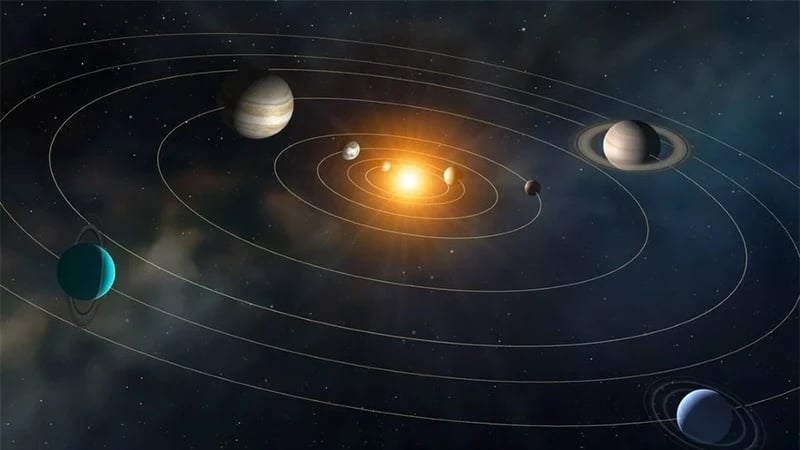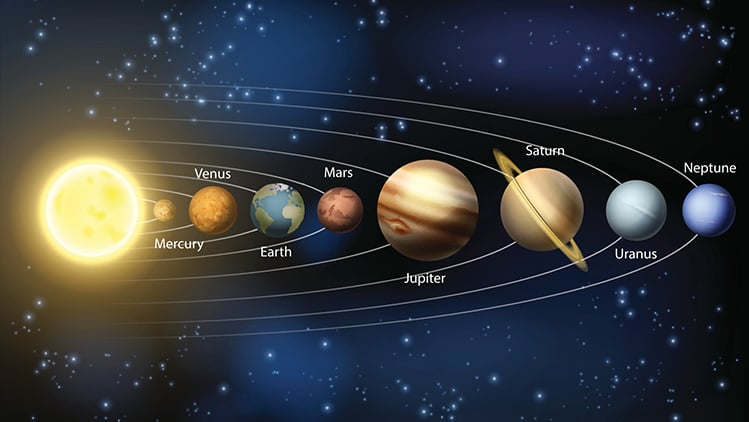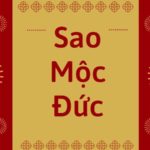The Sun is the largest star in our solar system, with a mass 1,048 times that of Jupiter. All the planets and objects in this system are subject to the Sun’s gravitational pull, but the reality is far more complex. The Earth also exerts a very small gravitational force that influences the Sun.
According to NASA research, Kepler’s third law reflects the relationship between the masses of two bodies orbiting each other. When a smaller star orbits a larger one, both celestial bodies will orbit a common point called the barycenter.
In cases where one body has significantly more mass than the other, the barycenter will be located within the larger body. Conversely, if the masses of the two bodies are comparable, the barycenter will lie outside both, and they will orbit that point.

When one body has significantly more mass, the barycenter will be located within it
Scientists have applied this principle to observe the motion of stars around their barycenter, aiding in the discovery of distant planetary systems.
Although the barycenter of objects in our solar system is usually close to the Sun, the gravitational influence of gas giants like Jupiter and Saturn can shift it outside the Sun. This means that Earth doesn’t orbit a point within the Sun but rather a different point in space.
Astronomer O’Donoghue explains, “The planets don’t just orbit the Sun; they are also influenced by Jupiter’s gravity.” This means that the planets actually orbit a new location in space.

Astronomer O’Donoghue highlights the influence of Jupiter’s gravity on planetary orbits
This principle also applies to smaller bodies, such as planets and their moons. The Earth and Moon orbit a point about 5,000 kilometers from the Earth’s center, and this distance varies as the Moon moves further away.
While these intricacies may have little impact on our daily lives, they remind us that the universe is far more complex than what we learn in school.
Jupiter in 2023: Navigating the Celestial Influence and Rituals
Jupiter, also known as Mộc Đức in Vietnamese astrology, is a powerful star that brings fortune and prosperity. This auspicious planet is associated with good luck, wealth, and success. Those born under its influence are said to be blessed with strong life force and vitality. So, what is the Jupiter/Moc Duc star all about, and how can one harness its positive energy while mitigating any potential challenges it may bring? Let’s delve into the world of Moc Duc and discover its secrets!
































